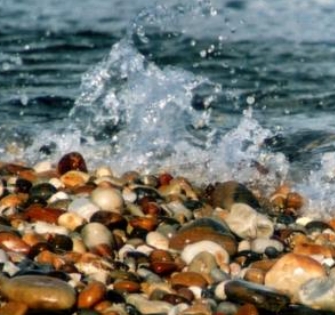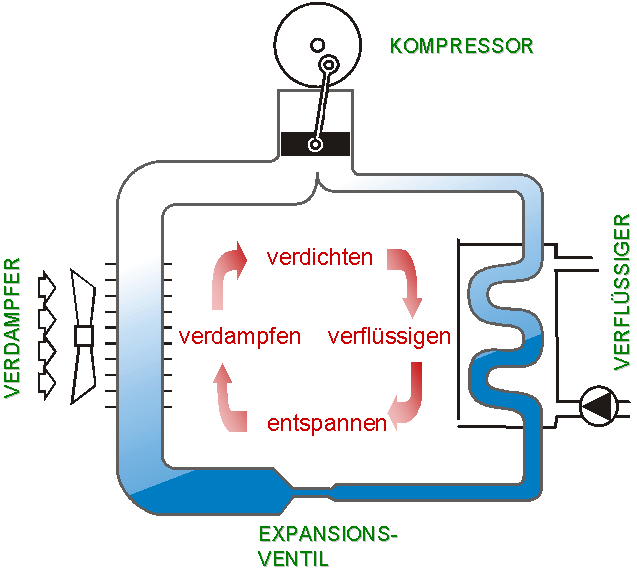Heat Pumps
 Water, Ground and Air - Natural Heat Sources of Heat Pumps
Water, Ground and Air - Natural Heat Sources of Heat Pumps
|
 |
How does a Heat Pump work?
The basic principle of the heat pump can be explained with the help of a refrigerator. Here heat is withdrawn from stored products by the evaporator and afterwards delivered to the back of the machine with the help of the condenser and finally released into the air. In the case of the heat pump, the evaporator withdraws the warmth from the environment (water, ground, outside air) and then with the help of a condenser supplies the warmth to the heating system (floor heating, radiators).
The cyclic process (see illustration) is the result of simple physical principles. The working material, a liquid boiling at low temperature (also called refrigerants), is led into a cycle and is thereby evaporated, compressed, liquefied and throttled.

This Cycle in Detail:
The evaporator contains the liquid medium under low pressure. The ambient temperature of the evaporator is higher than the boiling temperature of the medium. This temperature difference causes a heat transmission of the environment to the medium whereby the medium boils and evaporates. The warmth necessary for this process is withdrawn from the heat source (water, ground, outside air).
The compressor constantly exhausts the vaporous medium from the evaporator and compresses it. During this process the vapour pressure and its temperature rise.
From the compressor the medium goes into the condenser which is surrounded by the heating water. The temperature of this water flow is lower than the liquefaction temperature of the medium and so the steam is cooled and liquefied again. In the evaporator, thermal energy and energy supplied by the compressor (electrical energetic drive) is transferred within the condenser to the colder heating water.
After liquefaction the medium is led back into the evaporator by an expansion device. The medium is relieved (expanded) from the high pressure of the condenser to the low pressure of the evaporator. When entering the evaporator, the initial pressure temperature is achieved again. Finally the cycle is closed and can start again from the beginning.
Source: Department of Commerce Baden-Württemberg "Energie sparen durch Wärmepumpenanlagen"
|